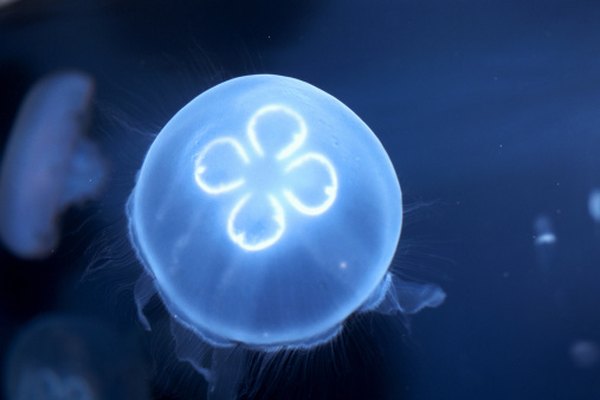
The hydra belongs to the same group of organisms as jellyfish and corals. Hydras are simple, multicellular animals that have existed for hundreds of millions of years. Although seemingly distant from their relatives the corals and sea anemones, hydras are classified together with these organisms because of a few common traits: their symmetry and body plan, as well as their feeding and defense mechanism.
Classification
Hydras belong to the Kingdom Animalia and the phylum Cnidaria. Farther down the hierarchy, hydras are a part of the class Hydrozoa and the order Hydroida, a group that has existed since Cambrian times when life was first forming.
The common hydra belongs to the suborder Eleutheroblastina, which is defined by free, solitary forms of hydroids. This means that hydras are not necessarily connected to the ground or other substrate. They also don't grow in colonies, like their distant cousins, the corals. They are typically more like jellyfish in their symmetry and structure.
Symmetry

One of the common traits amongst the cnidarians is their symmetry. Hydras, like all cnidarians, display radial symmetry. This means that they are formed with a distinct top and bottom, but no distinguishable left or right side. A hydra could be sliced from the top like a pie and all of the parts would be exactly the same. Oftentimes, hydras will also display tetrameral symmetry. This specifically indicates that the body can be divided into four equal, and identical, parts. It is possible for the hydra to demonstrate both types of symmetry at the same time, as tetrameral symmetry can be built around a radial plan.
Body Plan
Hydras are microscopic organisms with a tubelike central body. One end of this tube has an opening, which is the hydra's mouth, and the only opening in its body. The mouth is surrounded by tentacles that are armed with the hydra's hunting and defensive mechanism, the nematocysts. All cnidarians have these specialized stinging cells that can detect when a prey is near. The cells inject a paralyzing poison and the hydra is able to grab the prey with its tentacles and pull the victim into its digestive cavity.
Environment

Hydras are some of the only freshwater cnidarians, and thus they spark much interest in the scientific community. They are common elements in elementary science projects because their simple forms allow children to understand biological processes and primitive behaviors on a small scale. They are found mainly in ponds and lakes, which tend to be quiet, freshwater habitats. More than a few hydras have turned up in home aquariums as well. They prey on microorganisms, such as the water flea, that live in these environments.
References
- "Invertebrate Palaeontology and Evolution, 4th Ed."; E.N.K. Clarkson; 1998
Resources
About the Author
Laura Wormuth has been a professional writer for over five years and is currently the communications manager for Cambridge International. She holds a bachelor's degree in magazine journalism and a master's degree in earth sciences, both from Syracuse University.
